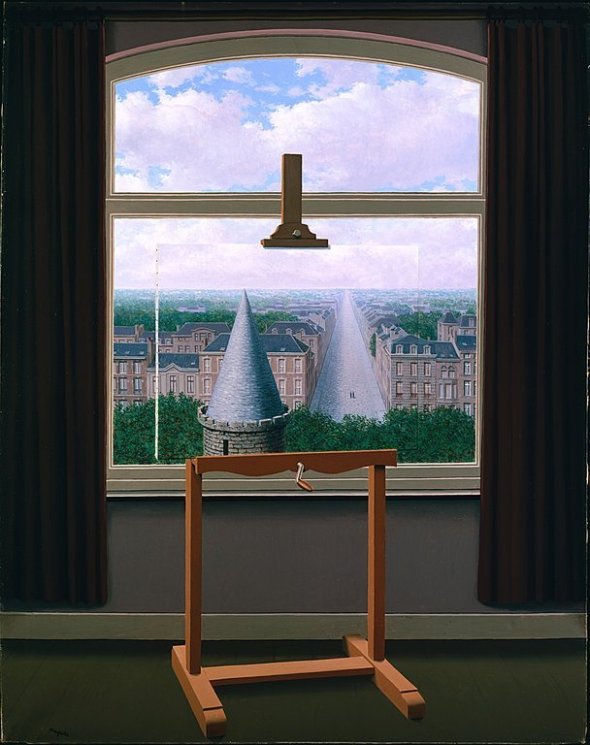René Magritte, “The Promenades of Euclid” (1955)
Magritte presents a favourite theme of a “canvas on a canvas” that is left suspended and undecided: the painting in front of the window may replicate the hidden reality or conceal and alter it. What appears possible or even obvious may in fact be a misleading illusion and multiple possibilities arise as one proceeds beyond the immediatelly obvious. Perhaps the painter of the canvas placed it in front of a window to display the skills of creating exact copies of reality. Perhaps the purpose of the canvas was to conceal an ugly or undesirable reality and replace it with another, more attractive. Or perhaps there is no canvas at all and what we see is simply a view out of a window, through a transparent sheet. Though Euclid’s mention seems out of place, it may be read as a comment on the close relation between painting and projective geometry, a non – typical type of non – Euclidean geometry that may be treated as Euclidean.
